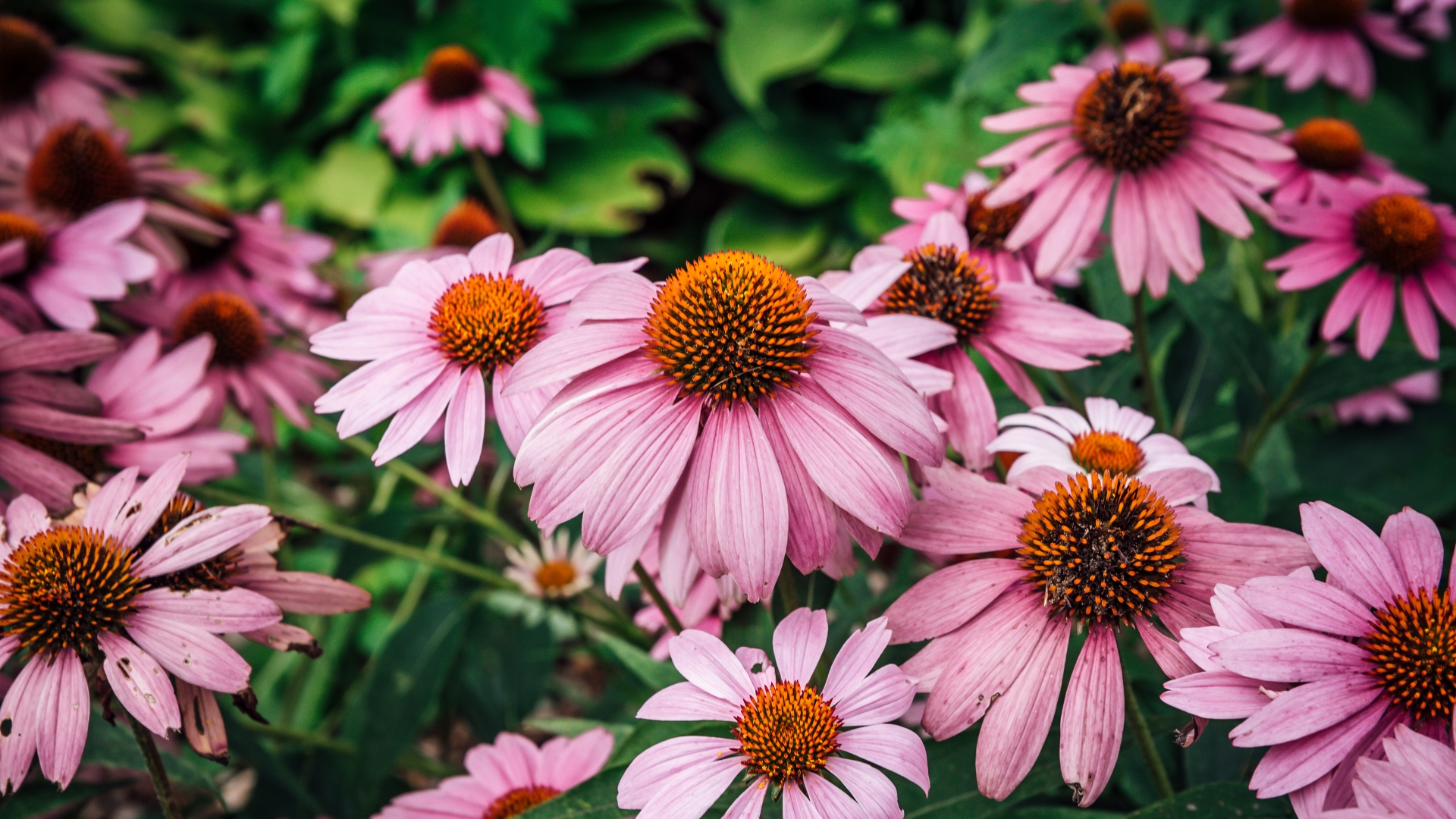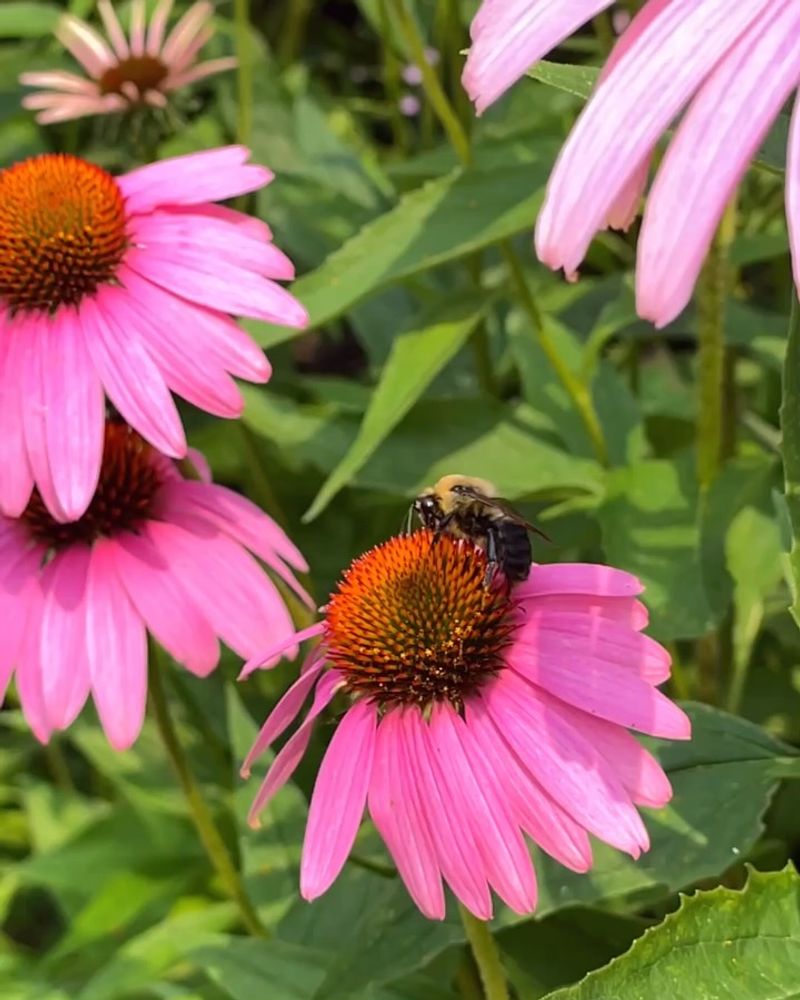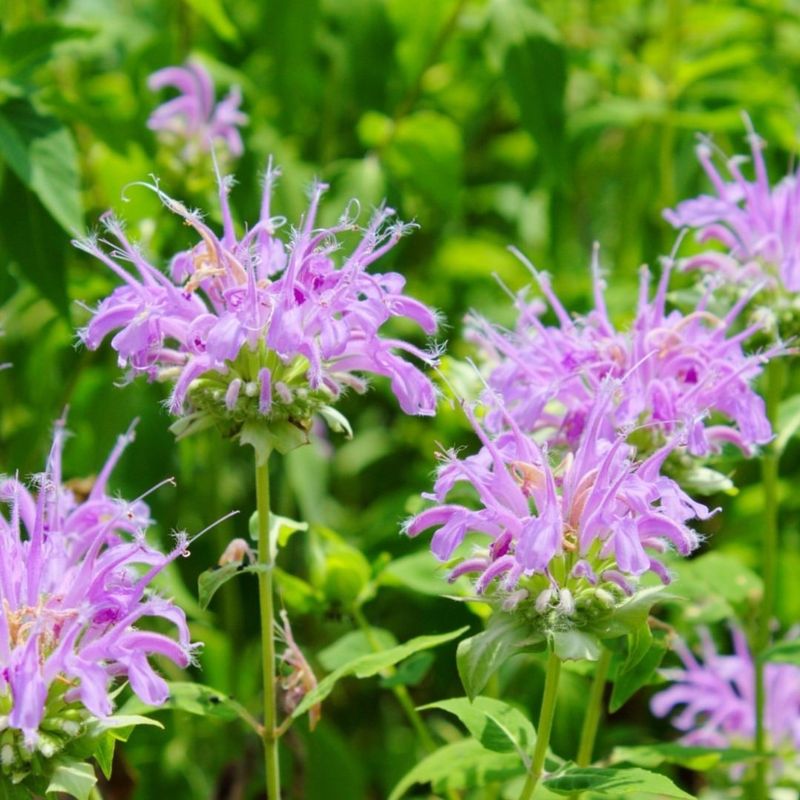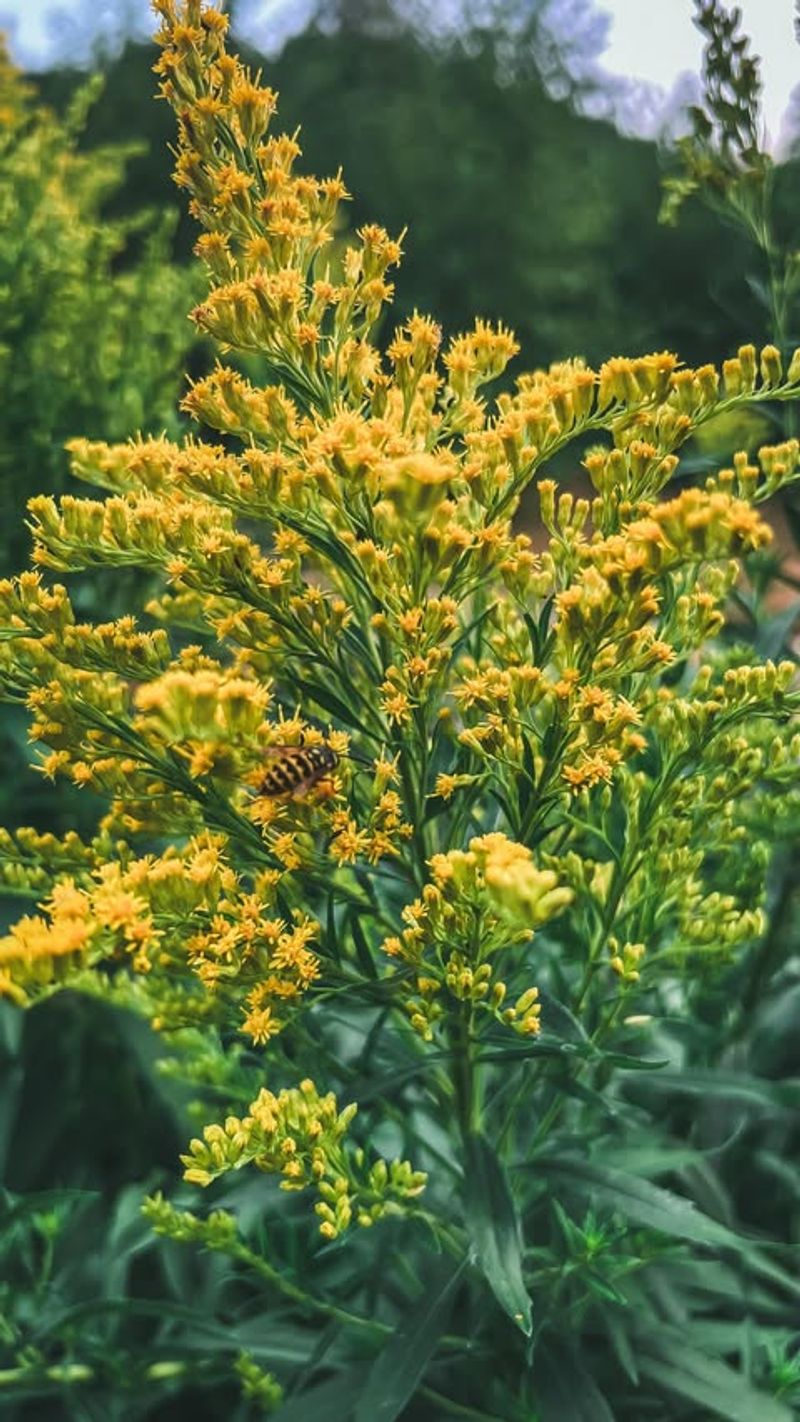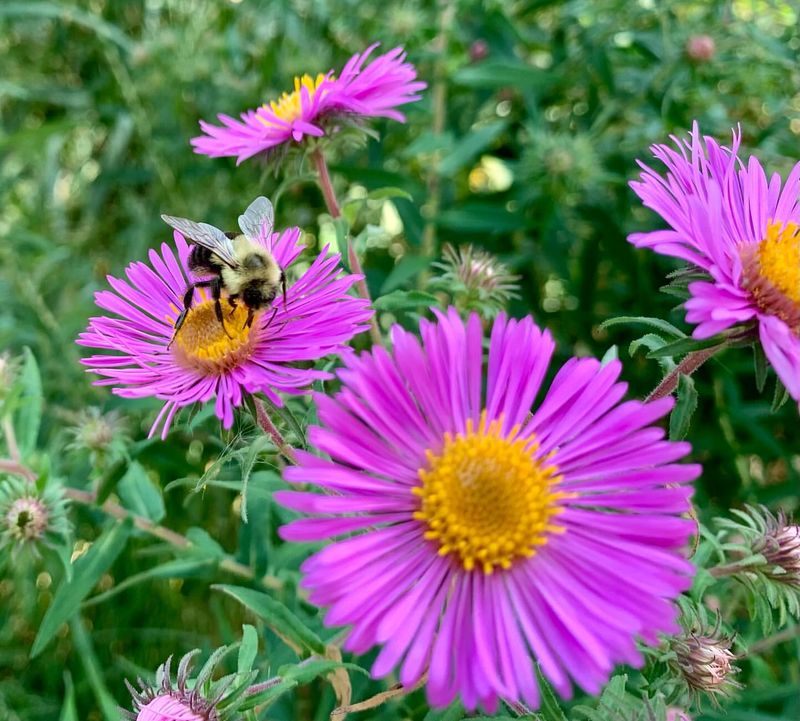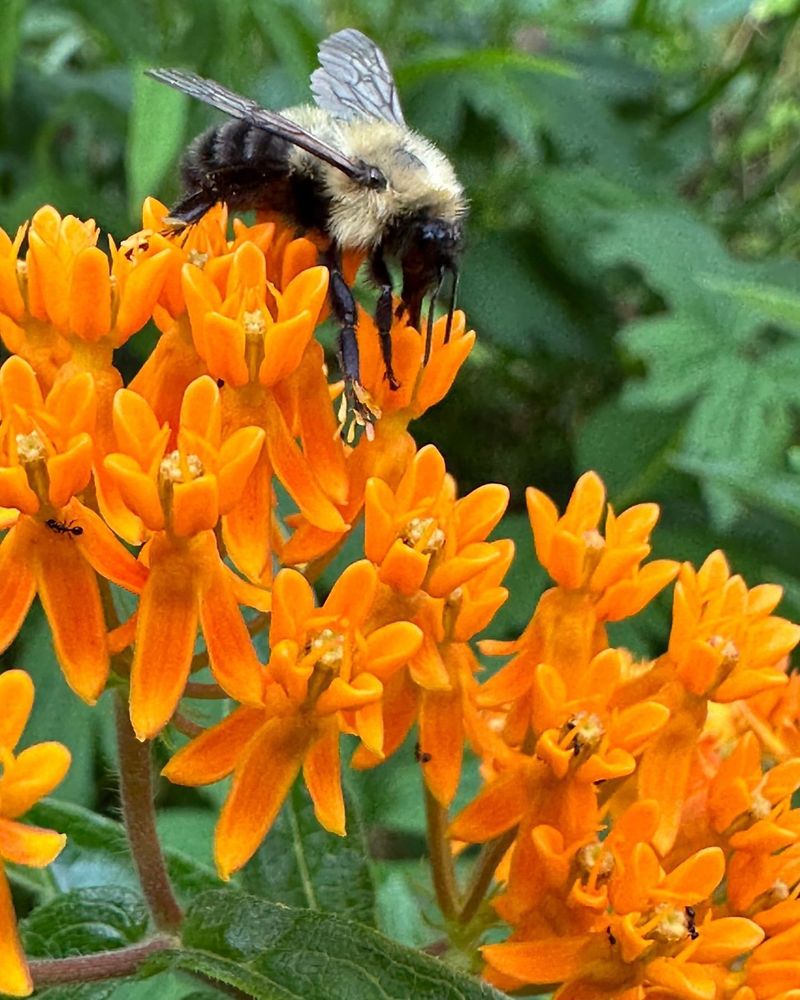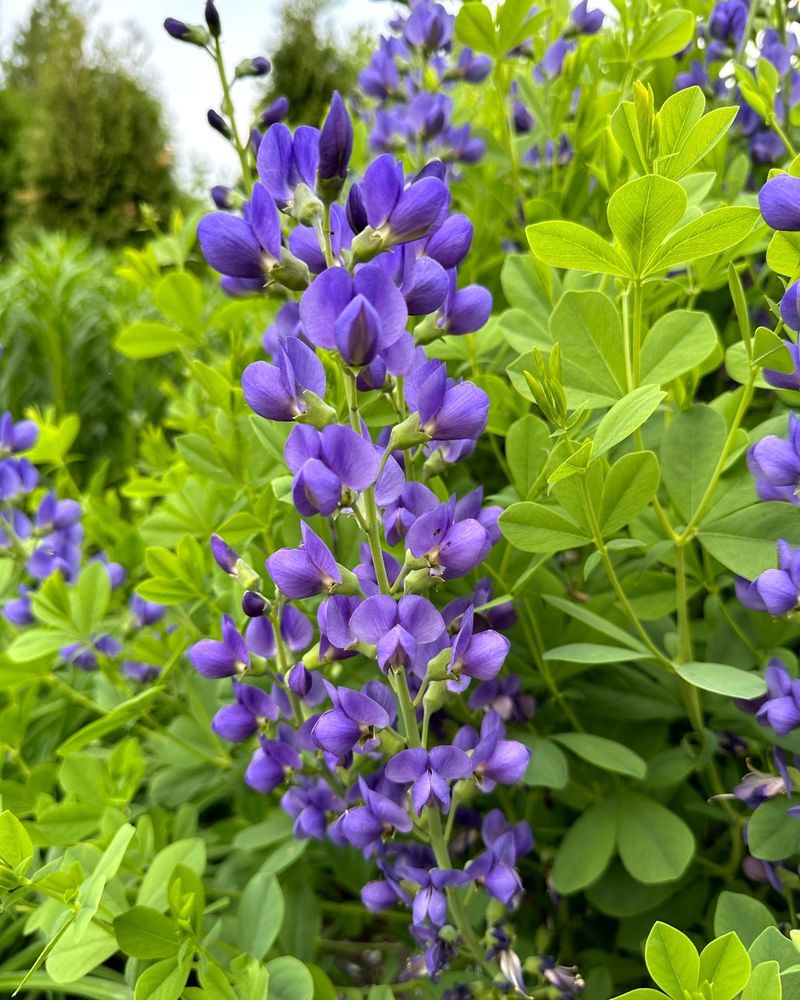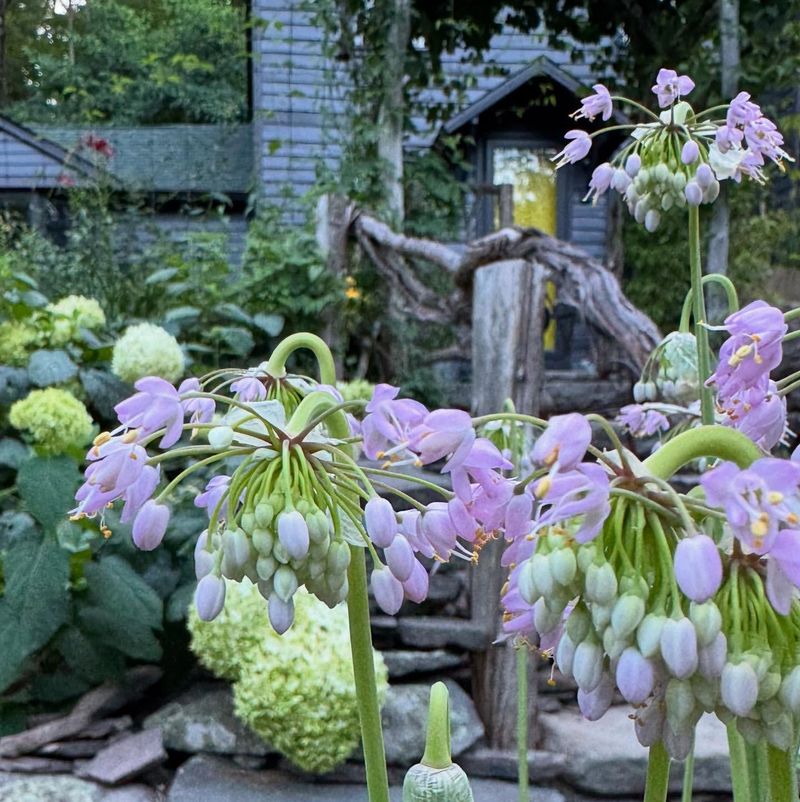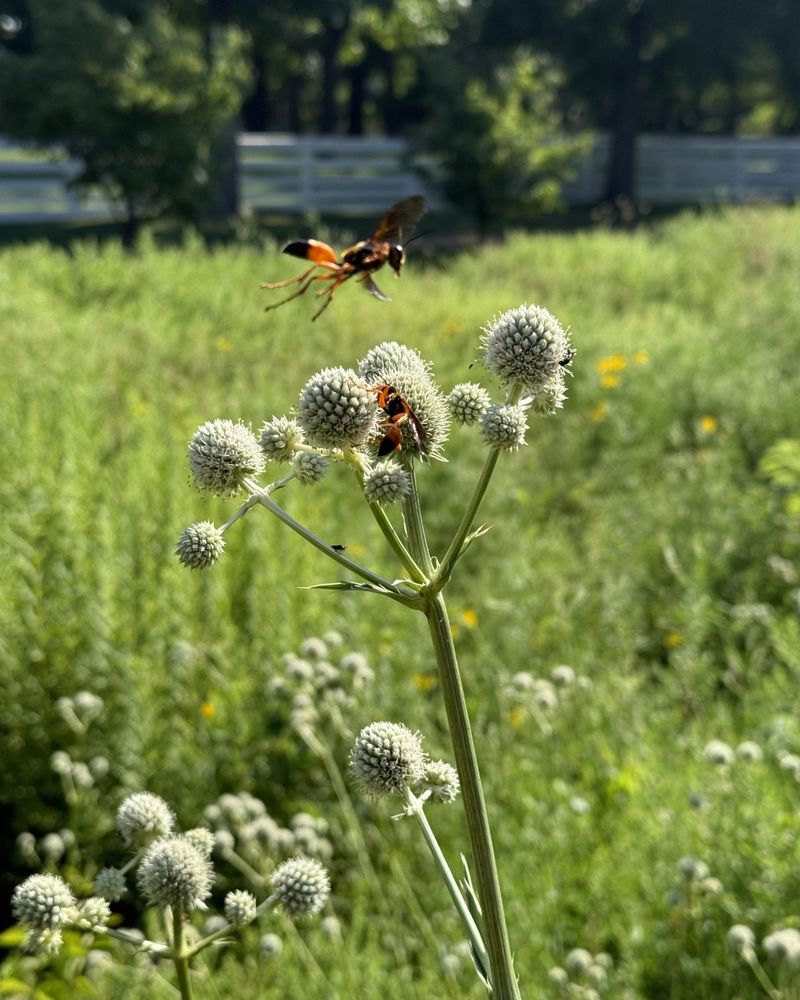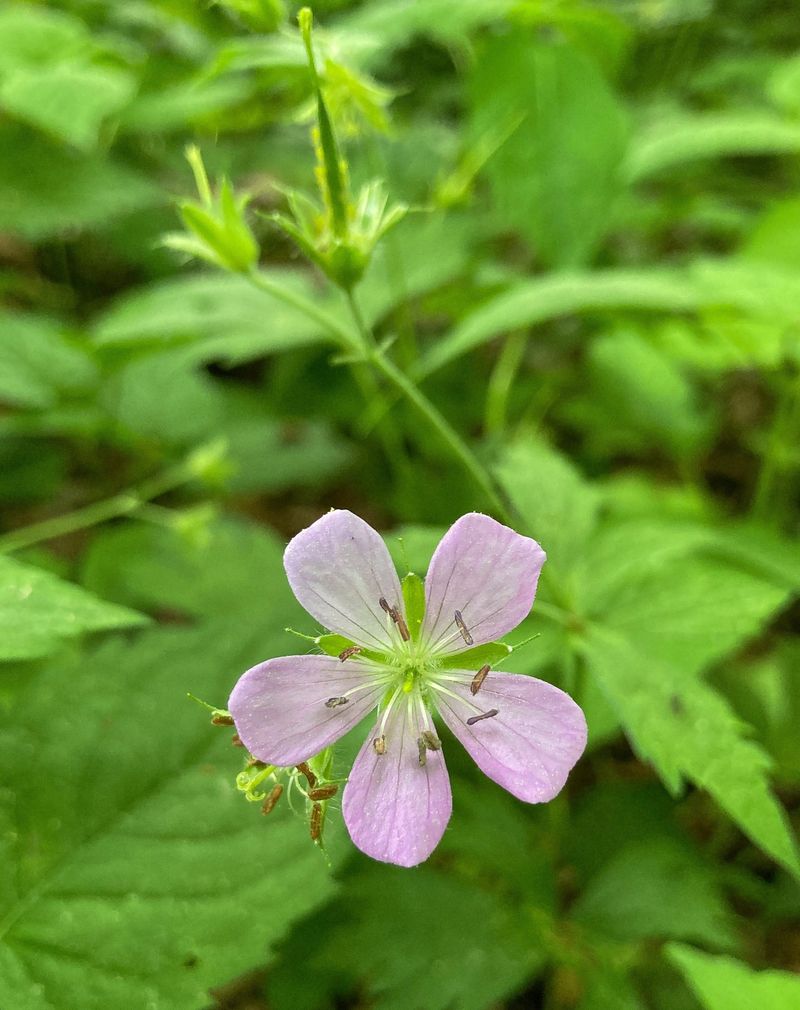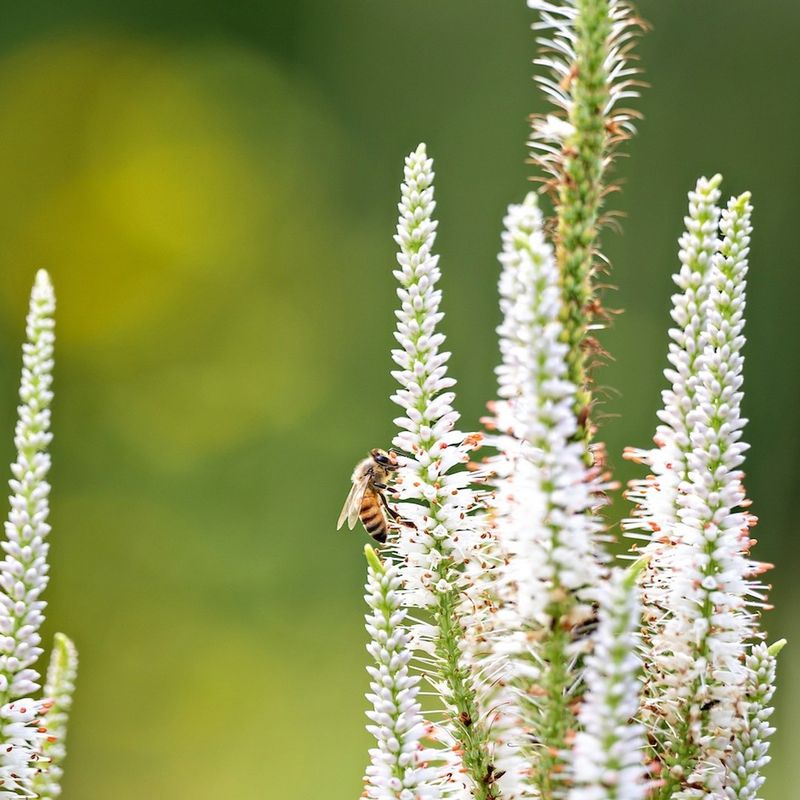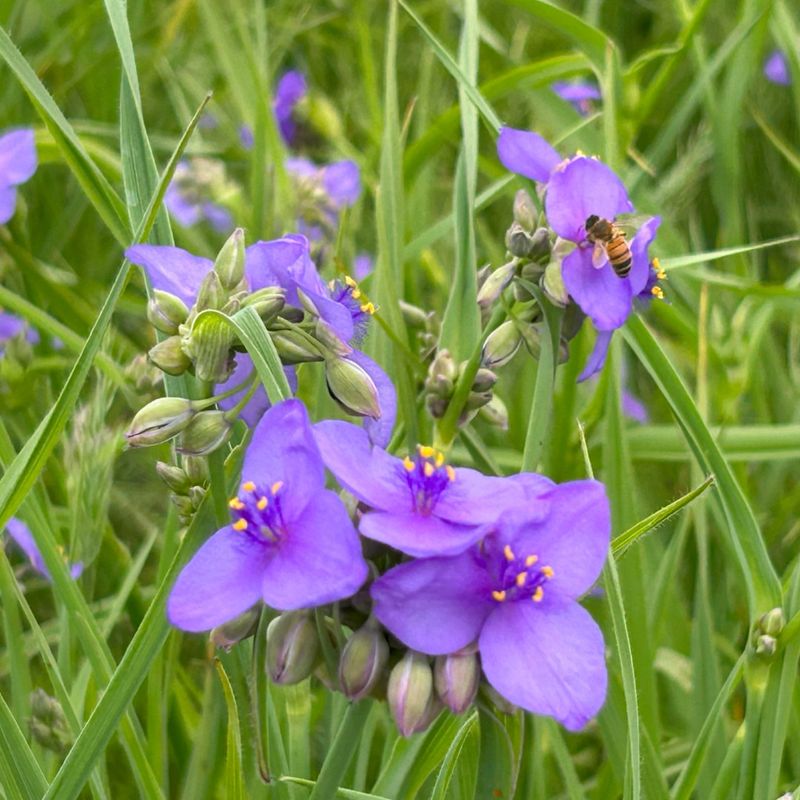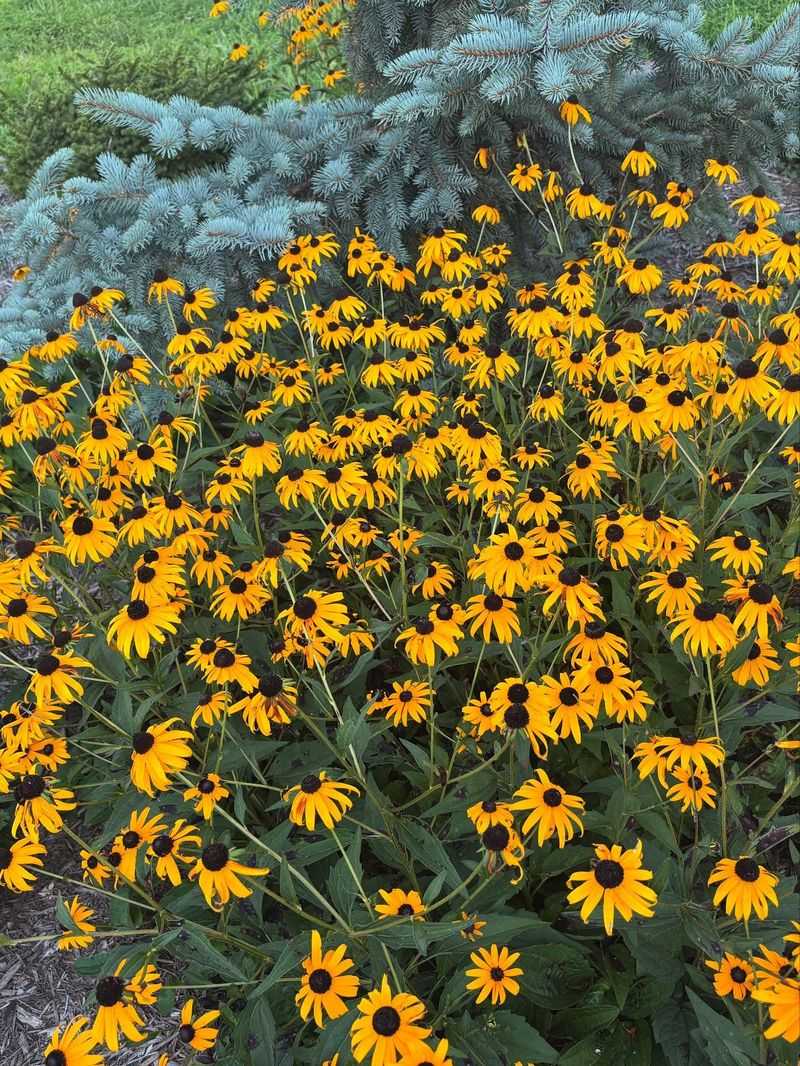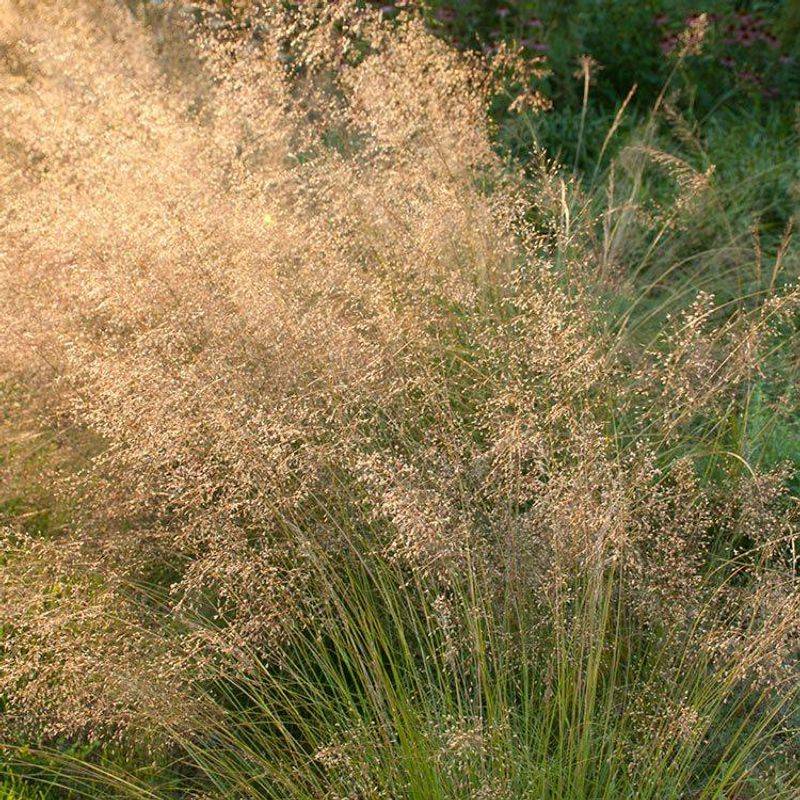If you want to turn your yard into a buzzing buffet for bees in Illinois, the right plants make all the difference. I’ve seen firsthand how quickly the pollinators show up when you plant their favorites.
These bee-friendly picks thrive in the Midwest and offer nectar and pollen from spring through fall. Not only do they help the bees, but they also keep your garden full of color and life.
Let’s roll out the welcome mat and keep those wings flapping all season long!
1. Purple Coneflower
Native to Illinois prairies, these stunning purple blooms attract bees throughout summer. Their raised centers provide perfect landing pads for hungry pollinators seeking nectar.
The coneflower’s drought resistance makes it ideal for Illinois gardens experiencing hot summers. Once established, they’ll return year after year, creating reliable feeding stations for local bees.
2. Wild Bergamot
Also called bee balm, this Illinois native produces lavender pom-pom flowers that bees simply can’t resist. The aromatic leaves give off a delightful minty scent when brushed against.
Thriving in prairie conditions common across the state, wild bergamot creates spectacular summer displays. Plant several clumps together for maximum visual impact and to create a bee buffet in your yard.
3. Goldenrod
Don’t blame goldenrod for your allergies – that’s ragweed’s fault! Goldenrod’s bright yellow flowers provide crucial late-season food for bees preparing for winter across Illinois.
These hardy natives create spectacular autumn displays when many other plants have finished blooming. Their abundant pollen makes them especially valuable for bees stocking up before cold weather arrives.
4. New England Aster
Late-blooming asters provide critical fall nutrition when other flowers have faded. Their purple daisy-like blooms dot Illinois landscapes and gardens from September through October.
Bees particularly value these flowers for their accessible nectar and abundant pollen. The timing of aster blooms helps bees prepare for winter, making them essential additions to any Illinois pollinator garden.
5. Butterfly Weed
Despite its name, butterfly weed is a bee magnet! The bright orange clusters create stunning displays in Illinois gardens while providing nectar-rich flowers that bees eagerly visit.
This drought-tolerant milkweed relative thrives in the state’s hot summers without much fuss. Plant it in well-drained soil where it can receive full sun for best flowering and maximum bee attraction.
6. Joe Pye Weed
Rising majestically in moist areas across Illinois, Joe Pye weed’s mauve flower clusters become bee highways in late summer. The tall stems can reach impressive heights of 5-7 feet, creating dramatic backdrops.
Perfect for rain gardens and low spots in Illinois landscapes, this native attracts countless pollinators. Its vanilla-scented flowers provide abundant nectar during the crucial late-season period when bees are preparing for winter.
7. Blazing Star
The striking purple spikes of blazing star create vertical interest while serving as bee feeding stations. Native to Illinois prairies, these drought-resistant perennials thrive in poor soils where other plants struggle.
Bees work their way up and down the flower stalks, methodically collecting nectar. In Illinois gardens, blazing star creates dramatic summer displays while supporting diverse pollinator populations throughout the growing season.
8. Wild Indigo
Early-blooming wild indigo provides crucial spring nutrition for bees emerging from winter hibernation. The blue-purple flowers resemble sweet peas and create charming displays across Illinois landscapes.
Once established in Illinois gardens, these natives develop deep taproots making them incredibly drought-tolerant. Their early bloom time fills an important niche when food sources for hungry spring bees can be scarce.
9. Anise Hyssop
The licorice-scented leaves of anise hyssop make this plant instantly recognizable in Illinois gardens. Its purple flower spikes bloom for weeks, providing consistent nectar sources for hardworking bees.
Easy to grow in average Illinois soil, this mint relative won’t take over your garden like other members of its family. The long bloom period from mid-summer into fall creates reliable feeding stations for bees throughout the growing season.
10. Nodding Onion
These charming natives produce dangling clusters of pink flowers that bees can’t resist. The unique drooping blooms create whimsical garden interest while serving as important nectar sources.
Perfect for rock gardens and dry spots in Illinois landscapes, nodding onions require minimal care once established. Their late spring to early summer bloom time bridges the gap between spring and summer flowers, providing continuous bee nutrition.
11. Rattlesnake Master
Don’t let the name scare you – bees love this unique Illinois native! The spiky, globe-shaped white flowers create architectural interest while serving as popular bee dining spots throughout summer.
The yucca-like blue-green foliage adds year-round texture to Illinois gardens. Historically used by Native Americans for medicinal purposes, rattlesnake master now plays an important role in supporting local bee populations across the state.
12. Wild Geranium
Delicate pink blooms appear in Illinois woodlands each spring, creating carpets of color beneath deciduous trees. Bees eagerly visit these early-season flowers, gathering critical nutrition after winter’s scarcity.
Perfect for shady garden spots that mimic Illinois’ natural woodland edges. Their ability to bloom before trees leaf out fully allows them to thrive in areas that become shadier as summer progresses.
13. Culver’s Root
The candelabra-like white flower spikes of Culver’s root create dramatic vertical elements in Illinois gardens. Bees buzz around these blooms throughout summer, gathering nectar from the numerous tiny flowers.
Native to moist prairies across the state, this perennial adds architectural interest to rain gardens. The long bloom period ensures continuous food sources for Illinois bees during the height of summer.
14. Spiderwort
Early risers will catch spiderwort’s vibrant blue-purple blooms opening with the morning sun across Illinois. Each flower lasts just one day, but plants produce new blooms daily for weeks.
The unusual three-petaled flowers provide early summer bee food in Illinois gardens. Their ability to tolerate part shade makes them versatile additions to garden edges where sun exposure varies throughout the day.
15. Black-Eyed Susan
These cheerful yellow daisies with dark centers create sunny splashes in Illinois gardens while feeding countless bees. Their extended bloom period from summer into fall provides reliable nutrition for pollinators.
Extremely adaptable to various Illinois soil conditions, black-eyed Susans naturalize readily. Plant them where they can spread to create impressive drifts that become buzzing bee highways throughout the growing season.
16. Prairie Dropseed
Not all bee-friendly plants have showy flowers! This elegant native grass produces tiny, fragrant blooms that bees visit for pollen. The fountain-like texture adds movement to Illinois gardens.
The late summer flowers might seem insignificant to humans but provide important resources for Illinois bees. The grass’s drought tolerance makes it perfect for challenging garden spots while its neat habit keeps it looking tidy all season.

